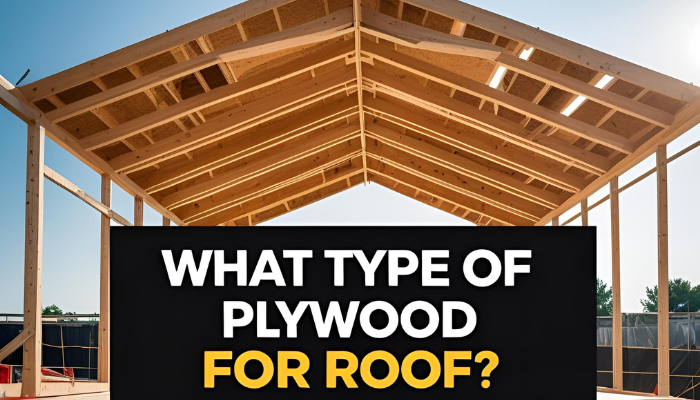A solid roof begins with proper materials, and using the proper plywood for roof sheathing is important for performance and durability. Plywood is a popular selection for roof decking plywood due to its strength and stability, but all plywood is not equal. What Type of Plywood for Roof? This guide explains the choices to enable you to construct a durable roof!
Understanding Roof Sheathing
Roof decking is the layer below the shingles, tiles, or metal roofing. Plywood tends to be more widely used because it is cheap, rather durable, and adaptable compared to things like OSB (Oriented Strand Board) or plank boards. The right kind of plywood on the roof gives it the strength and the weather resistance it needs, and thus is a key choice in any roofing project.
Types of Plywood for Roofing
CDX Plywood
CDX plywood, which contains a tough exterior-grade veneer, is the most widely used roof plywood. Inexpensive and weather-tight, it’s suitable for most residential roofs.
OSB vs. Plywood
OSB, constructed out of compressed wood strands, is more cost-effective but less resilient than plywood in damp climates. Plywood is stronger and more moisture-resistant, and a quality choice for roof decking plywood.
Exterior-Grade Plywood
Exterior plywood is are solid material built to withstand the damp elements, making it affordable to withstand the wet environment or rain.
Pressure-Treated Plywood
Treated to withstand rot and insects, this plywood is ideal for extreme conditions, but is not as prevalent unless certain conditions require it.
Read more: How Long Do Wood Shingles Last?
Recommended Plywood Thickness for Roofs
Plywood thickness for the roof usually measures between 3/8″ and 3/4″. The most important factors are:
- Roof Load:
More weight, such as snow or heavy tiles, needs thicker plywood. - Rafter Spacing:
Spacing 24″ wide requires thicker plywood to maintain stability. - Local Codes:
Construction codes can specify a minimum plywood size for the roof.
Verify local requirements to meet standards.
Read more: How to Shingle a Hip Roof with 4 Dormers?
Factors to Consider When Choosing Roof Plywood
Choosing the nature of plywood for the roof depends on:
- Climate:
Humid or wet regions require exterior-grade or pressure-treated plywood. - Roofing Material:
Heavy metal or tiles can demand thicker plywood. - Budget:
CDX finds a cost and durability balance for the majority of projects. - Regulations:
Local building codes usually require plywood grade and thickness.
Match your selection to these considerations for best performance.
Common Mistakes to Avoid
Avoid these mistakes:
- Using Interior-Grade Plywood:
It has no moisture resistance, causing rot. - Choosing Too-Thin Plywood:
Light panels can sag under heavy loads. - Ignoring Ventilation:
Poor airflow traps moisture, damaging plywood.
Check out our Roof Replacement services here!
Professional Tips for Installing Roof Plywood
Ensure a durable roof with these tips:
- Nailing Techniques:
Use corrosion-resistant nails, spaced per code, to secure plywood. - Allow Expansion Gaps:
Leave 1/8” gaps between sheets to accommodate swelling. - Add Underlayment:
Apply felt or synthetic underlayment for extra protection. - Hire Professionals:
Expert installation guarantees compliance and durability.
Final Thoughts
What type of plywood for roof? For a long-lasting roof that is resistant to the weather, the plywood type, CDX or exterior-grade, is the initial stage. Consider window and roof-framing thickness, climate, and local needs, and decide which size of roof plywood is best. Regular inspections and expert installation guarantee maximum longevity.
ONLY Roofing provides professional installation and advice for roof decking plywood projects. Ready to create a solid roof? Contact us for inspections, upgrades, or custom roofing solutions today!

